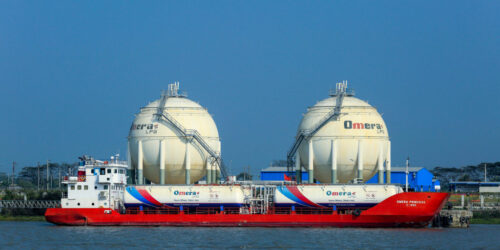7 May, the Asian Development Bank (ADB) issued a revamped energy policy for consultation – the policy’s first overhaul since 2009.
A decade is a long time in the energy world. Between 2010 and 2019, large-scale solar power generation costs dropped 80% (to US$0.068/kWh) and onshore wind dropped 60% (to $0.053/kWh). Both now undercut the levelised (lifetime) costs of new coal and gas.
The 2015 Paris Agreement has led many of ADB’s member countries to adopt carbon targets – and some, like China, net-zero targets. The International Energy Agency (IEA), usually bullish about the prospects for fossil fuels, now agrees a net-zero world should cease investing in new unabated fossil fuel. The IEA model’s new Net-zero by 2050 scenario calculates an annual global investment need of $3.5 trillion – much of it in the fast-growing Asian economies.
The IEA’s stated-policies scenario projects that between 2019 and 2030 primary energy demand in China, India and Southeast Asia will grow by 620 million tonnes of oil equivalent (Mtoe), from its current 3,300 Mtoe. This rate of growth is twice that of other developing regions, Africa, the Middle East and South and Central America, combined.
The ADB has contributed to Asia’s increased use of fossil fuels. Though it has not financed new coal since 2013, its old policy does not formally preclude it. Meanwhile, the bank has lent $4.7 billion for gas since 2015, according to Oil Change International. It has also leveraged private finance for gas. As recently as 2019, it lent $185 million and leveraged $120 million from the Japanese overseas assistance LEAP scheme for Jawa-1, a 1,760 MW gas power plant in Indonesia. In the same year, ADB made a $50 million contribution to Rojana Rayong 2, a $1.1 billion, 2,500 MW gas power plant in Thailand.
The new draft energy policy identifies four goals for the energy transformation. These can be summarised as follows:
Support for end-use energy efficiency via incentives and better policy
Transforming energy systems to low and zero-carbon, with digital technologies to help integrate renewable energy
Electrifying the transport, industry, and space cooling and heating sectors
Encouraging distributed renewable energy providers
The draft retains the existing prohibition of financing “any coal mining, oil and natural gas field exploration, drilling or extraction activities”. A minor tweak from the old policy excludes both support for coal mines tied to a power plant and spending on existing coal mines for the improvement of health and safety.
On electricity generation, the old policy allowed the ADB to “selectively support coal-based power projects if cleaner technologies are adopted”. The new policy is unambiguous on coal and will please many campaigners: “ADB will not finance any new coal-fired capacity for power and heat generation or any facilities associated with new coal generation.” The only role ADB envisages in coal generation is for projects to clean up emissions from power plants and district heating schemes.
The most significant change in the policy regards gas projects. The old policy allowed the funding of gas for electricity generation if it replaced coal, based on the prevailing view that solar photovoltaics were too expensive to make a cost-effective contribution to the ADB’s developing member countries. The new policy is still permissive of gas: “ADB may finance natural gas projects (including gas transmission and distribution pipelines, LNG terminals, storage facilities, gas-fired power plants, natural gas for heating and cooking).” But it applies five conditions that need all to be met. The project must:
provide energy to those previously without it or replace a less modern energy source (eg natural gas stoves to replace traditional biomass stoves)
not go ahead if there is a cost-effective renewable energy alternative (ie renewables-plus-storage over natural gas)
use internationally best available technologies
for natural gas power generation, will result in a net reduction in grid emissions (eg natural gas replacing diesel or coal power)
aligns with reaching carbon neutrality by mid-century.
Condition 2 requires both that the project demonstrate its cost-effectiveness against local renewables plus storage, and that a “social cost of carbon” of $36.30 per ton of CO2 (and rising) be applied to the investment case.
Condition 5 forces the new fossil fuel plant evaluation to assess the risk of the asset becoming “stranded” over its lifetime, given that its continued use would push the country off a net-zero trajectory. In combination, these two provisos are likely to stop funding for most gas generation except as back-up to renewables on isolated grids.
The net-zero by mid century goal has prompted some other changes in emphasis. One other major shift in direction signalled in the policy is the electrification of heating and of transport, via infrastructure investment for electric vehicles and electrical mass-transport systems. Such projects will lead to a substantial reduction in the demand for gas and oil but necessitate further extension and strengthening of electricity grids.
The net-zero economy also envisages a far more significant role for electricity storage driven by declining costs of batteries, green hydrogen and other synthetic fuels for the hard-to-abate sectors and grid management systems capable of levelling intermittent renewable supply. Achieving these is not a matter of investment but regulatory reforms allowing technologies to compete in developing member countries. ADB proposes to support countries’ efforts to develop strategies to help the diffusion of these technologies and, in parallel, ensure regulatory reforms in electricity markets, carbon pricing and urban planning.






